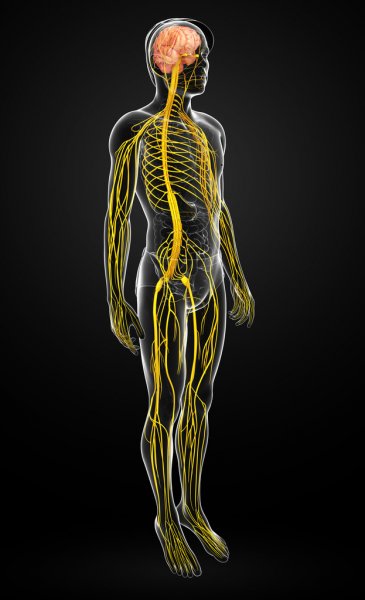What is circulation?

CIRCULATORY SYSTEM OR CARDIOVASCULAR SYSTEM:
What is cardiac muscle?
Cardiac muscle:
cardiac muscle One of the three muscle types (the others are skeletal and smooth); found in the walls of the heart, each rectangular heart muscle cell has one central nucleuslike smooth muscle, but it is striated like skeletal muscle. These cells are joined by intercalated discs, physical connections between the fibers of the myocardium, that relay each heartbeat through gap junctions (electrical synapses). Each strong and rhythmical contraction of the cardiac muscle is controlled by the autonomic nervous system and is involuntary.
Circulatory system The human circulatory system; the heart and all the vessels that transport blood to and from the heart.
Open Circulatory system:
A type of circulatory system where the internal transport of blood flows through the body cavity and bathes the organs directly and not through a system of vessels.
Closed Circulatory system:
A type of circulatory system where the blood is contained within a system of vessels and the heart; blood vessels carry blood through all the organs.
What is heart?
HEART:

A muscular organs composed of cardiac muscle that pumps blood throughout the body.
Parts of The Heart:
Viens:
A thin-walled blood vessel that carries blood to the heart. Smaller veins called venules connect veins to capillaries. In plants, they are the vascular bundles in leaves that consist of xylem and phloem. The veins are large along the leaf midvein and petiole and get smaller as they radiate out into the leaf, becoming known as veinlets.
Arteries:
A blood vessel that carries oxygenated (except the pulmonary artery) blood away from the heart via the right and left ventricles to organs throughout the body.The pulmonary artery carries unoxygenated blood from the heart to the lungs for oxygenation.
Capillaries:

The smallest blood vessels in the circulatory system. Capillaries have thin walls that facilitate the transfer of oxygen and glucose into a cell and the removal of waste products such as carbon dioxide back out into the blood stream, to be carried away and taken out of the body via the lungs. They act as the bridge between the arteries, which carry blood away from the heart, and the veins, which carry blood back to the heart.
Aorta:

The main trunk of the arterial system in the body is called the aorta. The aortic divisions are the abdominal aorta, thoracic aorta, aortic artery, and ascending aorta.
Ventricles:

The chamber of the heart that receives blood from the atrium (chamber that collects blood returning from the rest of the body) and contracts and pumps blood away from the heart. There are two ventricles in mammals and birds. The right ventricle pumps deoxygenated blood to the lungs via the pulmonary artery; the left ventricle pumps oxygenated blood to the body via the aorta. The tricuspid valve separates the right atrium and the right ventricle and prevents backflow from the ventricle to the atrium. The mitral valve separates the left atrium and the left ventricle and prevents backflow from the ventricle to the atrium. The aortic valve prevents backflow of blood from the aorta into the left ventricle. There are four brain ventricles. The right and left lateral ventricles lie within the cerebral cortex and connect with the very narrow third ventricle by way of openings called interventricular foramina. This third ventricle lies between the two halves of the thalamus and connects to the fourth ventricle via a long, thin tube called the cerebral aqueduct. The fourth ventricle lies in the hindbrain, under the cerebellum and dorsal to the pons and medulla.
Atrium:

An upper chamber that receives blood from the veins returning to the vertebrate heart and then pushes the blood to the ventricles, the lower chambers. There is a left and right atrium. Oxygenated blood returns from the lungs into the left atrium and gets pushed down to the left ventricle. The left ventricle pumps the blood out to the rest of the body, transporting the oxygen to parts of the body that need it. Blood returning from its voyage trough the lungs again to get more oxygen and the cycle continously repeats itself.
Thanks for visiting our website.We hope you learn something here.our posts are in pending we will post them soon,we will do our best to present you Science and General Knowledge.
Subscribe our website for more posts
Follow us on Facebook:
Follow us on YouTube:





0 Comments